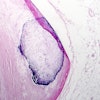Thursday, December 5 | 11:00 a.m.-11:10 a.m. | SSQ03-04 | Room E450B
Swiss and German researchers have developed 3D multimodal image fusion software that merges MRI perfusion and late gadolinium enhancement results with coronary CT angiography and CT-derived fractional flow reserve.Dr. Jochen von Spiczak from University Hospital Zurich is scheduled to present a study that included 17 patients who underwent both cardiac CT and MRI for suspected or known coronary artery disease. The researchers then used their postprocessing software to create 3D fused images of multimodal, multiparametric cardiac image data and compared the results with individual 2D readouts from CT and cardiac MRI.
How did the software perform? First of all, multimodal 3D image fusion was feasible in all patients. In addition, von Spiczak and colleagues rated the image quality from cardiac MRI perfusion, cardiac MRI late gadolinium enhancement, and CT coronary angiography as good to excellent. They found that cardiac MRI perfusion identified approximately half of the patients with hypoperfusion, while cardiac MRI late gadolinium enhancement showed myocardial scarring in approximately 20% of cases.
In comparison, coronary CT angiography revealed significant stenoses of more than 50% in approximately half of the patients, while CT-derived fractional flow reserve was possible in all but one patient and showed pathologic flow in 40% of cases.
Based on these early results, the multimodal, multiparametric 3D cardiac MR and CT image fusion software supports a comprehensive noninvasive diagnosis of coronary artery disease, the researchers concluded.




















